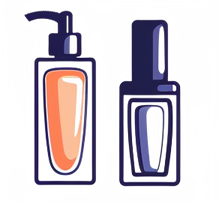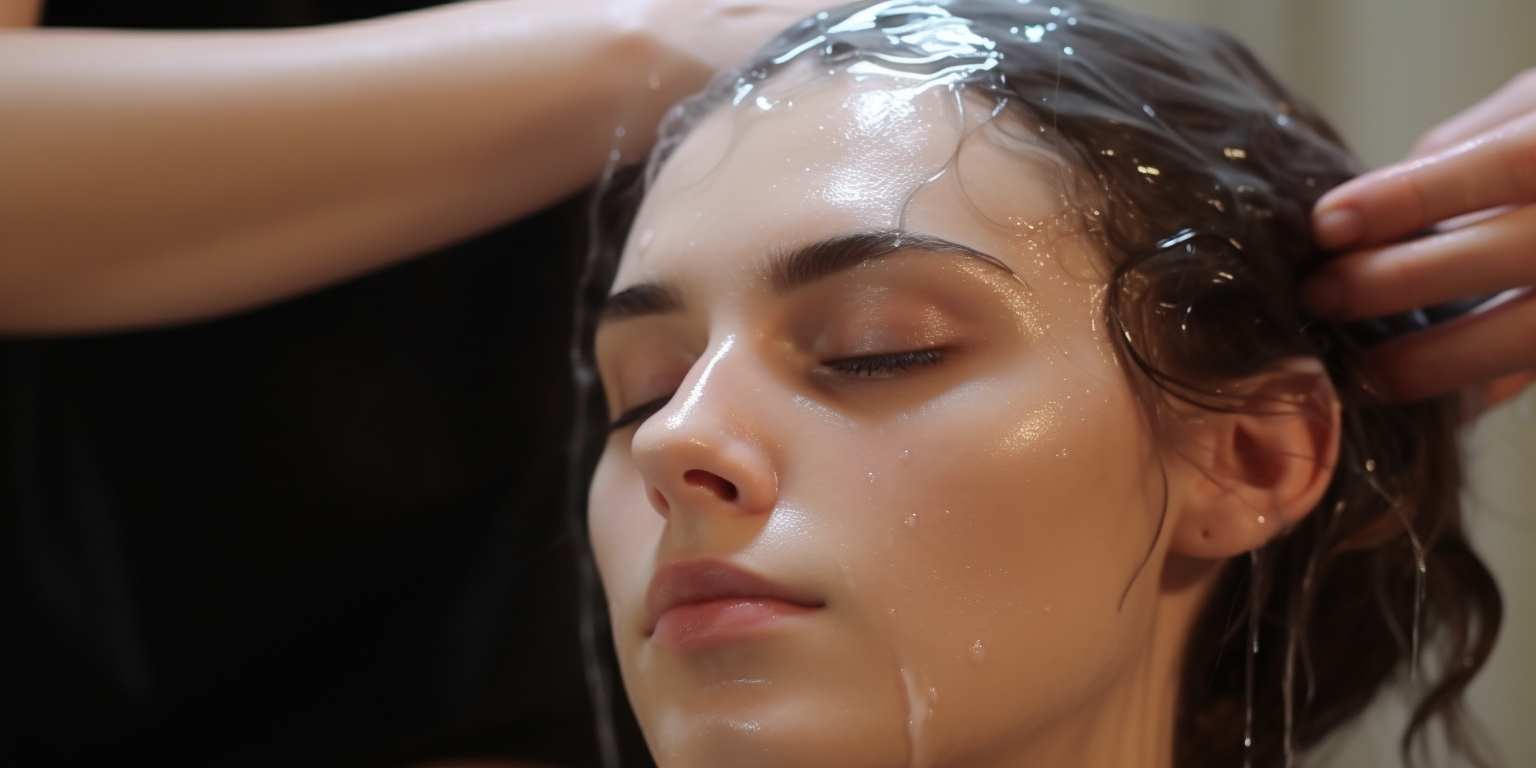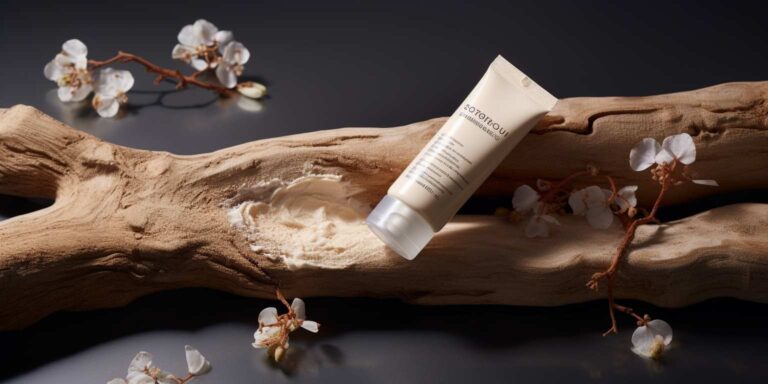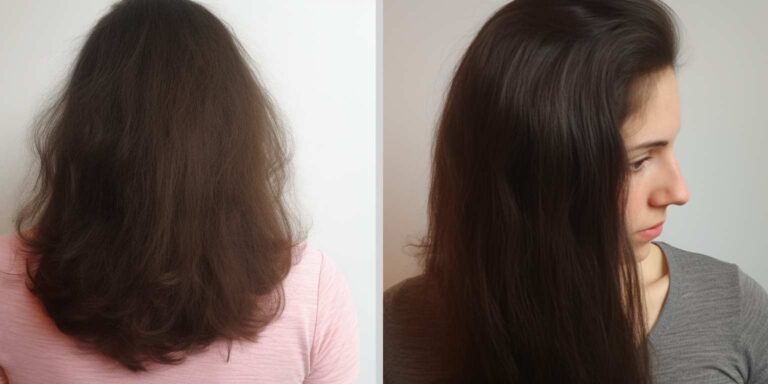The best shampoo for oily scalp: a complete guide
Key Ingredients:
| Ingredient | Benefits |
| Salicylic Acid | Exfoliates the scalp, unclogs pores, and regulates oil production. |
| Tea Tree Oil | Antibacterial properties help reduce scalp inflammation and control oiliness. |
| Clay | Draws out impurities and excess oil without stripping the scalp of essential moisture. |
| Charcoal | Acts as a magnet to absorb oil and impurities, leaving the scalp feeling fresh. |
Formulations:
- Cleansing Shampoos: These shampoos contain strong surfactants that deeply cleanse the scalp, removing excess oil and buildup. Look for formulas labeled “clarifying” or “detoxifying.”
- Balancing Shampoos: Formulated with gentle cleansers and oil-regulating ingredients, these shampoos aim to balance oil production without over-drying the scalp.
- Exfoliating Shampoos: Featuring ingredients like salicylic acid or fruit acids, exfoliating shampoos help slough off dead skin cells and unclog pores, preventing oil buildup.
- Natural/Organic Shampoos: For those preferring a gentler approach, natural or organic shampoos free of sulfates and parabens can help regulate oil production while nourishing the scalp.
Tips for Using Shampoo:
- Frequency: Wash your hair regularly, but avoid overwashing as it can strip the scalp of its natural oils, leading to increased oil production.
- Technique: Focus shampoo application on the scalp, massaging gently with fingertips to stimulate circulation and dislodge oil and debris.
- Rinse Thoroughly: Ensure all shampoo residue is thoroughly rinsed out to prevent product buildup, which can exacerbate oiliness.
- Follow with Conditioner: Use a lightweight conditioner on the lengths and ends of hair to avoid weighing down roots with excess moisture.
Choosing the right oil control scalp cleanser
When it comes to combating oily scalp issues, choosing the right oil control scalp cleanser is paramount for maintaining a healthy and balanced scalp environment. With a plethora of options flooding the market, it can be overwhelming to discern which product will effectively tackle excess oil production while also nourishing the scalp.
Understanding Your Scalp: Before delving into the realm of oil control scalp cleansers, it’s essential to understand your scalp type. Is your scalp excessively oily, or does it tend to veer towards the drier side? Identifying your scalp’s specific needs will guide you towards selecting the most suitable cleanser.
Key Ingredients to Look For: When perusing the ingredient list of oil control scalp cleansers, keep an eye out for certain key ingredients renowned for their ability to regulate sebum production and cleanse the scalp effectively. Salicylic acid, for instance, is a potent exfoliant that penetrates deep into the hair follicles, unclogging pores and removing excess oil and debris. Tea tree oil is another beneficial ingredient, revered for its antibacterial properties that help combat scalp inflammation and reduce oiliness.
Consider Your Hair Type: While addressing scalp concerns, it’s equally important to consider your hair type. Opt for a cleanser that not only controls oil but also caters to your hair’s unique needs, whether it’s curly, straight, thick, or fine. Look for products that strike a delicate balance, providing thorough cleansing without stripping the hair of its natural oils.
Frequency of Use: Determining how often to use an oil control scalp cleanser depends on individual factors such as scalp oiliness and lifestyle habits. For individuals with excessively oily scalps, daily cleansing may be necessary to maintain freshness and prevent buildup. Conversely, those with drier scalps may benefit from less frequent washing to avoid over-stripping the scalp of essential oils.
| Key Points to Remember: |
|---|
| 1. Identify your scalp type before selecting a cleanser. |
| 2. Look for key ingredients like salicylic acid and tea tree oil. |
| 3. Consider your hair type when choosing a product. |
| 4. Adjust the frequency of use based on scalp oiliness. |
How grease reducing hair wash works
Grease-reducing hair wash products are designed to tackle the pesky issue of oily hair, providing a solution that leaves your locks feeling fresh and clean. But how exactly do these wonder potions work their magic?
At the heart of grease-reducing hair wash formulations are potent ingredients that target excess sebum production and buildup on the scalp. One such ingredient is salicylic acid, a beta hydroxy acid renowned for its exfoliating properties. When applied to the scalp, salicylic acid penetrates the pores, effectively dissolving oil and debris, and unclogging hair follicles. This not only helps to reduce grease but also promotes healthier hair growth.
Another key player in grease-reducing hair wash formulations is zinc pyrithione. This powerful antimicrobial agent works to eliminate the yeast that can contribute to dandruff and oily scalp. By keeping microbial populations in check, zinc pyrithione helps to maintain a balanced scalp environment, reducing the likelihood of excess oil production.
Tea tree oil is another natural ingredient commonly found in grease-reducing hair wash products. With its antimicrobial and anti-inflammatory properties, tea tree oil helps to soothe the scalp while combating oiliness. It also imparts a refreshing sensation, leaving your scalp feeling invigorated.
Additionally, many grease-reducing hair wash formulas incorporate clarifying agents such as charcoal or clay. These ingredients act like magnets, drawing out impurities, excess oil, and product buildup from the scalp and hair. The result is hair that feels deeply cleansed and revitalized.
Furthermore, grease-reducing hair wash products often contain gentle surfactants that help to lift away dirt and oil without stripping the hair of its natural moisture. This ensures that your hair is left clean and refreshed without feeling dry or brittle.
When using a grease-reducing hair wash, it’s important to follow the instructions carefully for optimal results. Typically, you’ll want to massage the product into wet hair and scalp, allowing it to lather before rinsing thoroughly. For those with particularly oily scalps, a double cleanse may be beneficial.
Daily habits for a healthier, oil-free scalp
In the quest for a healthier, oil-free scalp, incorporating the right daily habits can make a significant difference. Consistent care and attention to your scalp can lead to a balanced and nourished environment, promoting overall hair health. Let’s delve into some essential practices that can help you achieve that desirable oil-free scalp.
Firstly, gentle cleansing is key. Use a mild, sulfate-free shampoo to cleanse your scalp thoroughly. Avoid harsh products that strip away natural oils, as this can lead to an overproduction of sebum. It’s a common misconception that washing your hair daily prevents oiliness; however, frequent washing can stimulate the sebaceous glands, making the situation worse.
Scalp exfoliation is an often overlooked but effective technique. Just like your skin, your scalp can benefit from occasional exfoliation to remove dead skin cells and excess oil. Use a gentle exfoliating scalp scrub or a brush with soft bristles to massage and stimulate blood flow, promoting a healthier scalp environment.
Integrate essential oils into your hair care routine. Tea tree oil, known for its antimicrobial properties, can help control excess oil production and soothe the scalp. Mix a few drops with your shampoo or a carrier oil and massage it onto your scalp. Additionally, lavender oil has calming effects and can contribute to a balanced scalp.
Regular hydration is not only crucial for your body but also for your scalp. Dehydration can lead to an imbalance in oil production. Make sure to drink an adequate amount of water daily and consider using a hydrating conditioner on your hair, focusing on the lengths and avoiding the scalp if you’re prone to oiliness.
When it comes to hair styling products, choose wisely. Many products contain ingredients that can contribute to an oily scalp. Opt for lightweight, water-based products, and avoid excessive use of styling products to prevent product buildup, which can trap oil and lead to scalp issues.
Diet plays a significant role in the health of your scalp. A well-balanced diet with sufficient vitamins and minerals, particularly vitamin A and zinc, can regulate sebum production. Incorporate foods like leafy greens, carrots, and nuts into your meals to support a healthy scalp from the inside out.
Manage stress effectively, as it can impact your overall well-being, including your scalp health. Practice stress-reducing activities such as yoga, meditation, or deep breathing exercises. Chronic stress can lead to hormonal imbalances that may trigger excessive oil production.
Balancing your scalp’s ph for less oil production
To balance your scalp’s pH for less oil production, it’s crucial to understand the science behind it. Your scalp naturally produces sebum, an oily substance that helps protect your hair and keep it moisturized. However, when the pH balance of your scalp is disrupted, it can lead to overproduction of sebum, resulting in greasy hair and scalp issues.
The pH scale ranges from 0 to 14, with 7 being neutral. A pH below 7 is considered acidic, while a pH above 7 is alkaline. The ideal pH level for your scalp is slightly acidic, typically between 4.5 and 5.5. This acidic environment helps maintain the integrity of your scalp’s barrier and prevents the growth of harmful bacteria and fungi.
To balance your scalp’s pH, consider incorporating the following tips into your hair care routine:
| Tips for Balancing Scalp pH | Description |
|---|---|
| Use a pH-balanced shampoo | Choose shampoos specifically formulated to maintain the ideal pH level for your scalp. Look for products labeled as pH-balanced or mild. |
| Avoid harsh ingredients | Steer clear of harsh sulfates and alcohol-based products, which can strip away natural oils and disrupt the scalp’s pH balance. |
| Rinse thoroughly | Ensure you rinse your hair thoroughly after shampooing to remove any residue that could affect the pH balance. |
| Apple cider vinegar rinse | Consider using an apple cider vinegar rinse diluted with water as a final rinse after shampooing. Apple cider vinegar helps restore the scalp’s natural pH and remove buildup. |
| Avoid overwashing | While it’s essential to keep your scalp clean, overwashing can strip away too much oil, leading to compensatory overproduction of sebum. |
Natural ingredients that combat scalp oil
In the pursuit of a balanced and healthy scalp, combatting excess oil is often a primary concern. Fortunately, nature provides a plethora of solutions to address this common issue. Let’s delve into some natural ingredients renowned for their ability to regulate scalp oil production and promote overall scalp health.
Tea Tree Oil: Extracted from the leaves of the Melaleuca alternifolia plant, tea tree oil boasts potent antibacterial and antifungal properties. Its ability to cleanse the scalp and regulate oil production makes it a popular choice for combating excess sebum. Incorporating a few drops of tea tree oil into your shampoo or applying it directly to the scalp can help restore balance.
Aloe Vera: Revered for its soothing properties, aloe vera is a versatile ingredient that can benefit oily scalps. It hydrates the scalp without leaving behind a greasy residue, making it ideal for balancing oil production. Additionally, its anti-inflammatory effects can help alleviate scalp irritation often associated with excess oil.
Apple Cider Vinegar: A natural astringent, apple cider vinegar helps to remove excess oil and buildup from the scalp. It also helps to restore the scalp’s natural pH balance, which can be disrupted by excessive oil production. Dilute apple cider vinegar with water and use it as a final rinse after shampooing to reap its benefits.
| Key Ingredient | Benefits |
|---|---|
| Tea Tree Oil | Antibacterial, antifungal, regulates oil production |
| Aloe Vera | Hydrates, soothes inflammation, balances oil production |
| Apple Cider Vinegar | Removes excess oil and buildup, restores pH balance |
Jojoba Oil: Despite being an oil itself, jojoba oil closely resembles the natural oils produced by the scalp. This similarity allows it to regulate oil production without clogging pores or causing further imbalance. Its lightweight nature makes it suitable for oily scalps, providing moisture without greasiness.
Witch Hazel: Another natural astringent, witch hazel helps to tighten the pores and reduce oil production. It’s particularly beneficial for those with acne-prone scalps, as it can help prevent breakouts associated with excess oil. Incorporate witch hazel into your hair care routine as a refreshing scalp toner.
Preventing oily scalp without drying out your hair
If you find yourself battling an oily scalp but are wary of the potential damage harsh products can inflict on your hair, fret not. Striking the right balance between controlling scalp oiliness and maintaining healthy locks is achievable with a few strategic tweaks to your hair care routine.
Firstly, gentle cleansing is key. Harsh shampoos can strip your scalp of its natural oils, prompting it to produce even more to compensate. Opt for mild, sulfate-free shampoos that cleanse without over-drying. This helps maintain the natural moisture balance of your scalp.
Consider incorporating a clarifying shampoo into your routine once a week. This helps remove excess oil, product buildup, and impurities that regular shampoos might miss. However, avoid frequent use, as it can lead to dryness and stimulate more oil production.
Conditioning plays a crucial role in preventing dryness while managing oiliness. Choose a lightweight, oil-free conditioner and apply it mainly to the ends of your hair. This prevents the scalp from getting overly moisturized while still nourishing your strands.
Tea tree oil is a natural remedy that can assist in regulating scalp oiliness. Its antibacterial properties help keep the scalp clean, reducing the risk of excess oil production. Consider adding a few drops to your shampoo or diluting it with a carrier oil for a soothing scalp treatment.
Avoid overwashing. While it may seem counterintuitive, washing your hair too frequently can signal to your scalp that it needs to produce more oil. Stick to a regular washing schedule and use dry shampoo between washes to absorb excess oil without stripping your hair.
Blotting papers aren’t just for your face. They can be a quick fix for an oily scalp too. Gently blot your scalp to absorb excess oil without disrupting your hairstyle. Carry a few in your bag for on-the-go touch-ups.
Diet matters. Incorporate omega-3 fatty acids, found in foods like salmon and flaxseeds, into your diet. These healthy fats help regulate oil production and contribute to overall hair health.
Lastly, styling products can exacerbate oiliness. Opt for lightweight, water-based products that won’t weigh your hair down or contribute to greasiness. Additionally, avoid applying products directly to the scalp.







